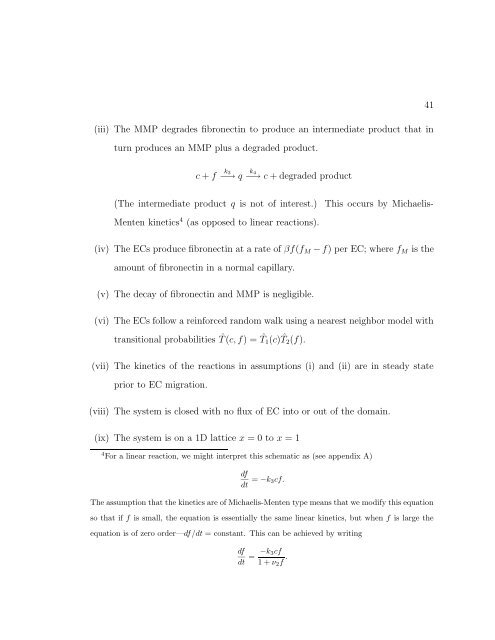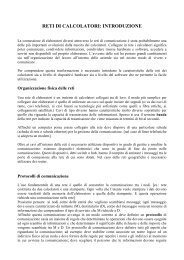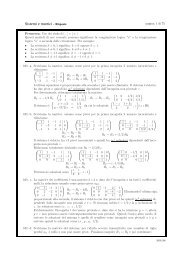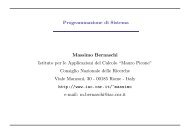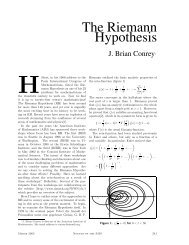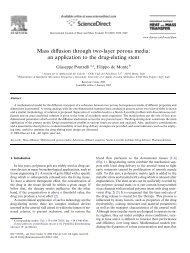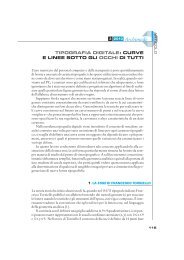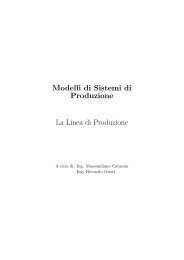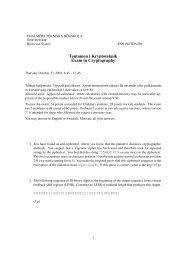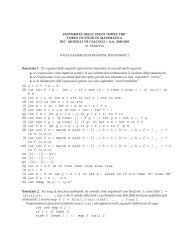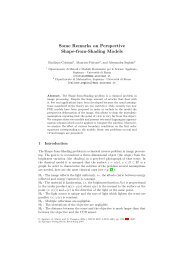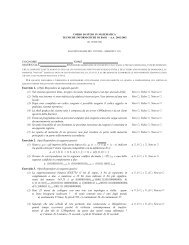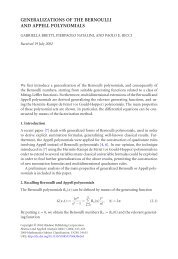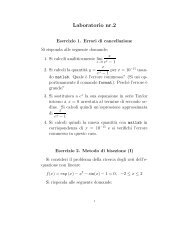A SHORT COURSE IN THE MODELING OF CHEMOTAXIS
A SHORT COURSE IN THE MODELING OF CHEMOTAXIS
A SHORT COURSE IN THE MODELING OF CHEMOTAXIS
You also want an ePaper? Increase the reach of your titles
YUMPU automatically turns print PDFs into web optimized ePapers that Google loves.
(iii) The MMP degrades fibronectin to produce an intermediate product that in<br />
turn produces an MMP plus a degraded product.<br />
c + f k3 k4<br />
−→ q −→ c + degraded product<br />
(The intermediate product q is not of interest.) This occurs by Michaelis-<br />
Menten kinetics 4 (as opposed to linear reactions).<br />
(iv) The ECs produce fibronectin at a rate of βf(fM − f) per EC; where fM is the<br />
amount of fibronectin in a normal capillary.<br />
(v) The decay of fibronectin and MMP is negligible.<br />
(vi) The ECs follow a reinforced random walk using a nearest neighbor model with<br />
transitional probabilities ˆ T (c, f) = ˆ T1(c) ˆ T2(f).<br />
(vii) The kinetics of the reactions in assumptions (i) and (ii) are in steady state<br />
prior to EC migration.<br />
(viii) The system is closed with no flux of EC into or out of the domain.<br />
(ix) The system is on a 1D lattice x = 0 to x = 1<br />
4 For a linear reaction, we might interpret this schematic as (see appendix A)<br />
df<br />
= −k3cf.<br />
dt<br />
The assumption that the kinetics are of Michaelis-Menten type means that we modify this equation<br />
so that if f is small, the equation is essentially the same linear kinetics, but when f is large the<br />
equation is of zero order—df/dt = constant. This can be achieved by writing<br />
df −k3cf<br />
=<br />
dt 1 + ν2f .<br />
41


